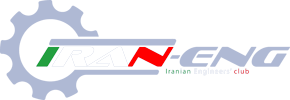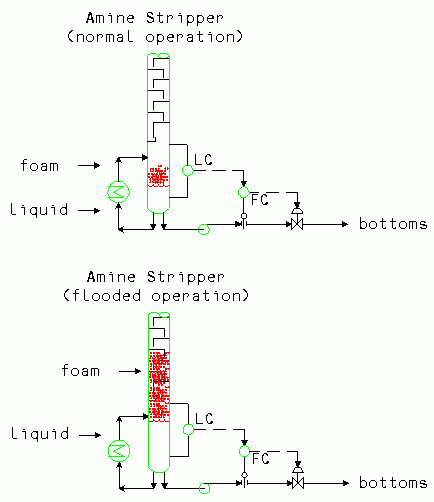Dear all,
I' m going to reactivate this topic.I'm ashamed of myself because I 've abandoned English for a long time .It's unblievable but I can't speak or wright easily.Ok let's get to the point .We were translating a text about the problem with controlling at distilation column .I couldn''t translate a paragraph and it ceased me.Now I'll continue .I' m sure that I've made a mistake please help me.
Poor level control makes operation unstable and damages equipmentI' m going to reactivate this topic.I'm ashamed of myself because I 've abandoned English for a long time .It's unblievable but I can't speak or wright easily.Ok let's get to the point .We were translating a text about the problem with controlling at distilation column .I couldn''t translate a paragraph and it ceased me.Now I'll continue .I' m sure that I've made a mistake please help me.
One of the basic facets of stable and effective control is system inventory control. Pressure control regulates vapor inventory. Level control regulates liquid inventory. A common control configuration with distillation towers has bottom level controlling the bottom product rate. Normally, this is on cascade control.
Inaccurate liquid indication causes many expensive operating problems. If the level is lower than expected, pump cavitation damage may result. Cavitation damages pump seals. Damaged pump seals leak. Maintenance costs increase. Leaks can lead to fires, massive unit upsets and place personnel in danger.
Poor liquid level control reduces the effectiveness of advanced control systems. Decoupled control systems depend upon using liquid inventory changes to dynamically compensate for control disturbances while minimizing regulatory changes to the system.
High liquid levels damage equipment. Liquid backing into reboiler return lines damages trays. Entering reboiler vapors push the liquid up the tower. Tray damage results. Damaged trays do not work. Product losses result. One common area with damage is stripping trays in an atmospheric crude petroleum distillation tower. In one case, poor level control allowed liquid to back up over the stripping trays in the bottom of the tower. Stripping steam then hammered the liquid against the trays, damaging them. Damaged stripping trays in atmospheric crude towers can drop yields by up to 15 percent on crude.
At a different refinery, startup problems caused a high level in an atmospheric crude tower. The liquid backed over the stripping trays and filled the flash zone over the feed inlet nozzle. Entering feed threw the liquid up the tower and destroyed the wash trays. During startup, steam was not yet being fed to the unit. Hence, the stripping trays escaped the fate of the wash trays further up the tower.
Damaged wash trays allowed residue to entrain into the atmospheric gas oil (AGO) product. AGO with entrainment poisons downstream catalysts and reduces yield. After nearly a year of operation with dark AGO and millions of dollars in losses, the unit was shut down and repaired.
In other cases, entering vapors may push foam up the tower and flood the trays. Figure 1 shows how the problem affected an amine stripper in a proprietary amine gas-treating unit. The tower floods. Liquid may even end up going out the tower overhead line. This plant lost an overhead accumulator full of liquid at least once and often twice per week. Foam entrainment forced a capacity reduction. Reduced capacity drops production or forces operation at lower product purities. Both problems cost money.
my problem is the red part.
Inaccurate liquid indication causes many expensive operating problems. If the level is lower than expected, pump cavitation damage may result. Cavitation damages pump seals. Damaged pump seals leak. Maintenance costs increase. Leaks can lead to fires, massive unit upsets and place personnel in danger.
Poor liquid level control reduces the effectiveness of advanced control systems. Decoupled control systems depend upon using liquid inventory changes to dynamically compensate for control disturbances while minimizing regulatory changes to the system.
High liquid levels damage equipment. Liquid backing into reboiler return lines damages trays. Entering reboiler vapors push the liquid up the tower. Tray damage results. Damaged trays do not work. Product losses result. One common area with damage is stripping trays in an atmospheric crude petroleum distillation tower. In one case, poor level control allowed liquid to back up over the stripping trays in the bottom of the tower. Stripping steam then hammered the liquid against the trays, damaging them. Damaged stripping trays in atmospheric crude towers can drop yields by up to 15 percent on crude.
At a different refinery, startup problems caused a high level in an atmospheric crude tower. The liquid backed over the stripping trays and filled the flash zone over the feed inlet nozzle. Entering feed threw the liquid up the tower and destroyed the wash trays. During startup, steam was not yet being fed to the unit. Hence, the stripping trays escaped the fate of the wash trays further up the tower.
Damaged wash trays allowed residue to entrain into the atmospheric gas oil (AGO) product. AGO with entrainment poisons downstream catalysts and reduces yield. After nearly a year of operation with dark AGO and millions of dollars in losses, the unit was shut down and repaired.
In other cases, entering vapors may push foam up the tower and flood the trays. Figure 1 shows how the problem affected an amine stripper in a proprietary amine gas-treating unit. The tower floods. Liquid may even end up going out the tower overhead line. This plant lost an overhead accumulator full of liquid at least once and often twice per week. Foam entrainment forced a capacity reduction. Reduced capacity drops production or forces operation at lower product purities. Both problems cost money.
my problem is the red part.





 very nice farzan
very nice farzan









